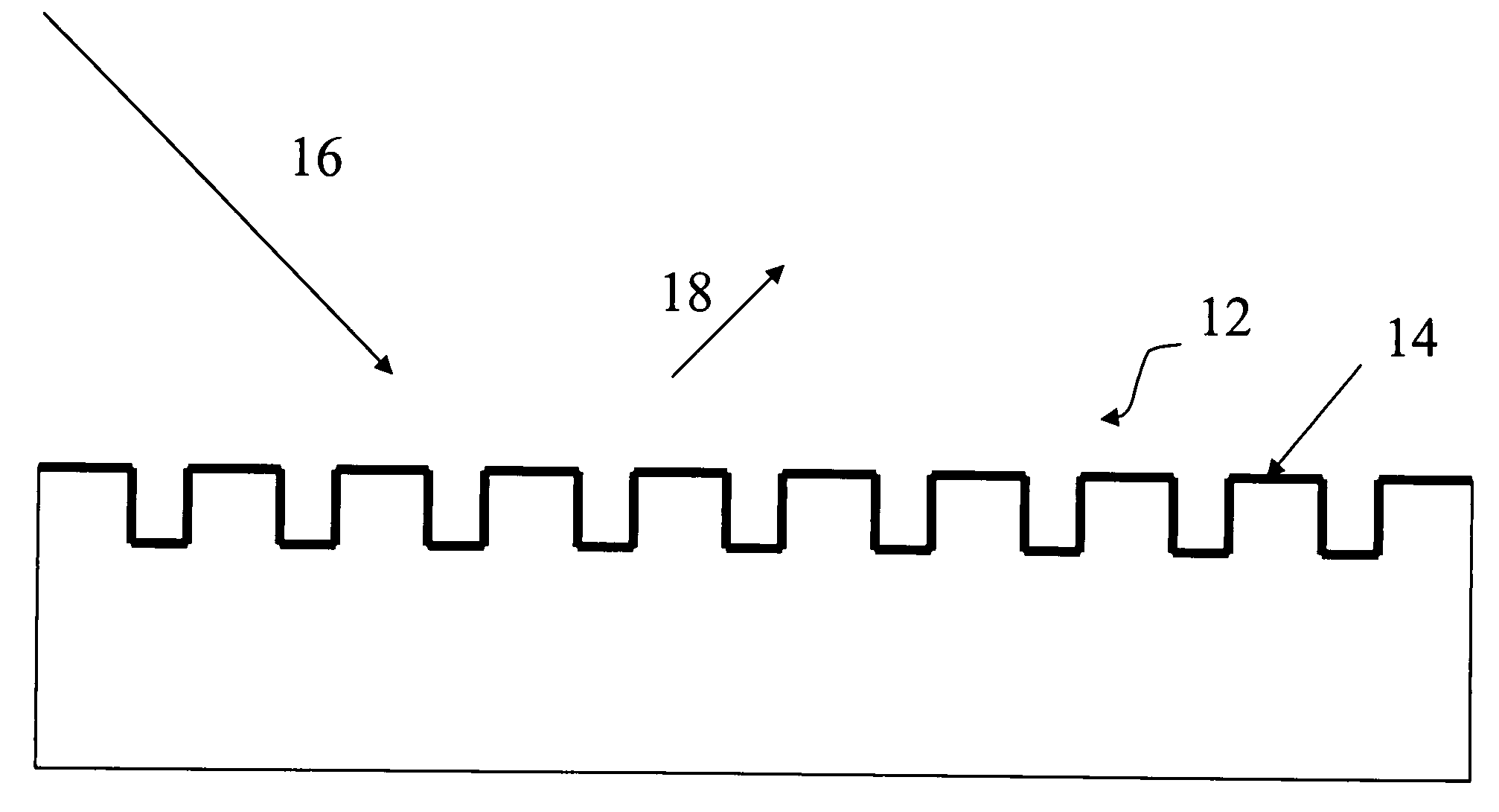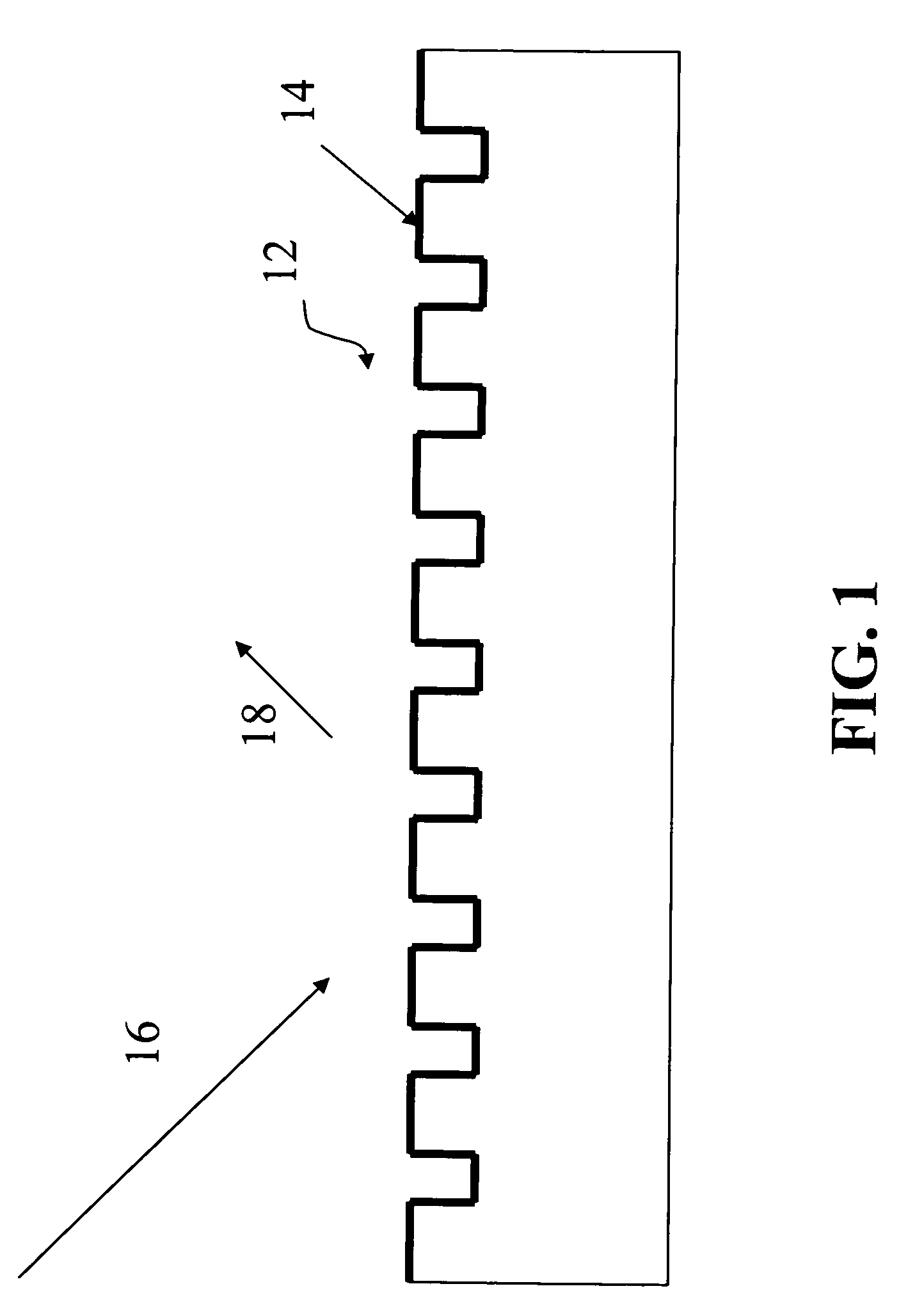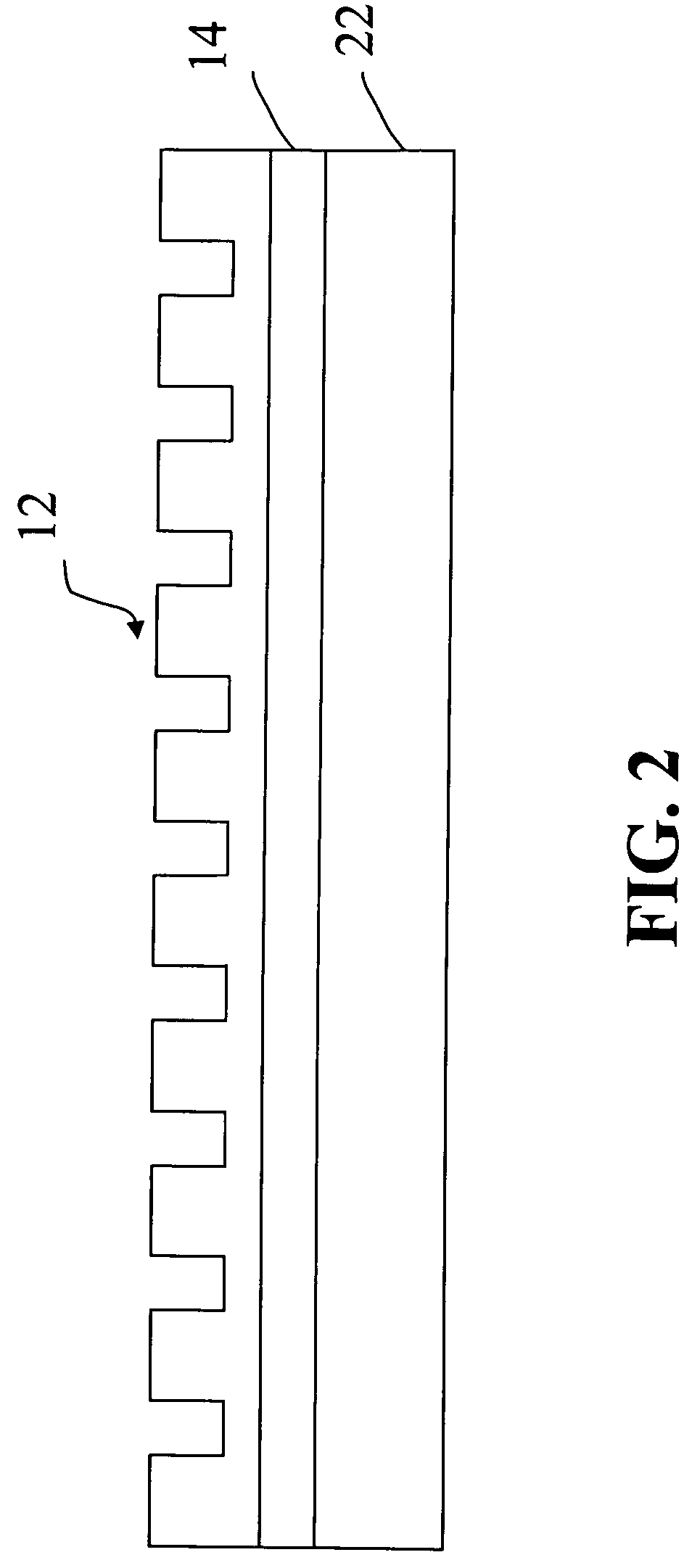Nonlinear optical guided mode resonance filter
a resonance filter and optical guided mode technology, applied in the field of optical filters, can solve the problems of difficult, fast, and inexpensive fabrication of such filters, and achieve the effects of convenient, quick, and relatively inexpensive fabrication
- Summary
- Abstract
- Description
- Claims
- Application Information
AI Technical Summary
Benefits of technology
Problems solved by technology
Method used
Image
Examples
example 1
Growth of Monolayered Organic Films for Nanostructured Nonlinear Photonic Devices
[0077]Organic films, prepared by the ionic self-assembled monolayer technique and deposited on periodic substrates, exhibit smooth surface morphology and anomalous dispersion phase matching suitable for nanostructured nonlinear photonic devices.
[0078]The layer-by-layer ionic self-assembled-monolayer (ISAM) method is useful for development of organic materials for photonic device applications. Research on organic films prepared by this method, including absorption and second harmonic (SH) measurements, has been reported. The current work is motivated by integrating organic films into resonant periodic structures yielding new, efficient nonlinear photonic devices. Several types of organic films have been prepared using the ISAM method; in this example we report results obtained with films known in abbreviated, standard form as PDDA / Poly S-119, PTOPDT / PSS, and PTOPDT / Poly S-119.
[0079]As an example, the opt...
example 2
ISAMs: Fabrication and Characterization of Planar Waveguide Nonlinear Devices
[0083]Waveguides were fabricated for nonlinear optical devices by spin-coating or dip-coating alternating layers of three derivatives of pyrylium-based cationic and anionic solutions on planar substrates. The pyrylium salt chormophores are incorporated into a polymer host having a natural molecular alignment perpendicular to the charged substrate. The self alignment of each subsequent layer provides the noncentrosymmetry required for χ(2) processes, with ∞ mm symmetry, as well as superior hardness and thermal stability. The monolayer assembly process typically creates surface roughness features detrimental to waveguide processes, thus characterization of surface features and development of processes and materials that mitigate these features is important. It is noted that some ISAM combinations perform better than other and may mitigate the surface roughness features.
[0084]This example presents combinations...
example 3
Second-harmonic Generation in Resonant Waveguide Gratings Incorporating
ISAM Polymer Films
[0089]Organic materials are used in various applications such as second-harmonic generation (SHG) due, in part, to their potential nonlinear coefficients. Polymer films grown by an ISAM technique are beneficial as the films require no poling and are mechanically and thermally stable. Further, ISAM techniques provide for tailoring uniformly the nonlinearity and noncentrosymmetry throughout the thickness of the films, even on nonplanar surfaces such as gratings. These polymeric films exhibit anomalous dispersions which may be applied to realize effective phase matching between the fundamental wave and its second harmonic.
[0090]The basis for guided-mode resonance filters (GMRF) arises in waveguide gratings, as the external input wave is phase-matched, via the periodic element, to a leaky waveguide mode, producing a sharp reflection peak. At resonance, the input beam energy density is concentrated i...
PUM
| Property | Measurement | Unit |
|---|---|---|
| surface roughness | aaaaa | aaaaa |
| incident angle | aaaaa | aaaaa |
| reflectance | aaaaa | aaaaa |
Abstract
Description
Claims
Application Information
 Login to View More
Login to View More - R&D
- Intellectual Property
- Life Sciences
- Materials
- Tech Scout
- Unparalleled Data Quality
- Higher Quality Content
- 60% Fewer Hallucinations
Browse by: Latest US Patents, China's latest patents, Technical Efficacy Thesaurus, Application Domain, Technology Topic, Popular Technical Reports.
© 2025 PatSnap. All rights reserved.Legal|Privacy policy|Modern Slavery Act Transparency Statement|Sitemap|About US| Contact US: help@patsnap.com



